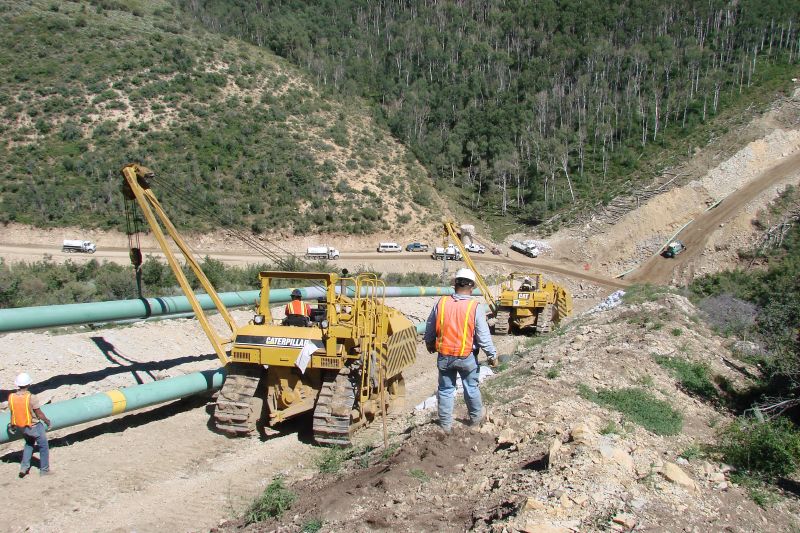A little-noticed Federal Energy Regulatory Commission (FERC) announcement could have an outsized impact on the oil and gas pipeline industries — if the commission decides to snap shut loopholes that analysts say create financial incentives to build too many new pipelines in the U.S.
The way the rules are currently written can allow unusually high profit margins for new pipeline projects. Since 1997, FERC has allowed certain new pipelines to rake in 14 percent profits — a rate far higher than the returns presently generated by, say, corporate bonds — with little eye to how that compares to profits available from other investments.
FERC’s rates have raised eyebrows in the legal community.
“The idea that the 14 percent ROE [Return On Equity] granted to new pipeline projects does not vary regardless of broader market conditions indicates that FERC today may not be realistically incorporating risk into expansion facility pricing,” attorneys Barbara Jost, William M. Friedman, and Karol Lyn Newman wrote in a recent Energy & Environmental Law blog post. “This allows pipelines to over-recover on their investments and creates an incentive for pipelines to overbuild.”
Federal Appeals Court Allows FERC to Continue Pipeline Policy that Encourages Overbuilding https://t.co/hPd9KZMCGs
— FERC Watch (@FERCWatch) April 22, 2019
Billions on the Line?
FERC’s March 21 notice of inquiry requests comment from the public on how it should calculate rates of return in the future. Energy lawyers say that billions of dollars could be on the line.
Market analysts — and even a former FERC commissioner — have highlighted FERC’s responsibility for allowing unnecessary pipeline construction projects, which critics say will leave the United States criss-crossed by newly built fossil fuel infrastructure despite falling renewable energy prices and growing concern about the climate crisis. Critics add that because utilities can pass along costs to consumers in their monthly bills, FERC has effectively allowed them to use other people’s money to build pipes that may never be fully used.
FERC has long struggled to prevent overbuilding, especially when it comes to the natural gas industry, which is notorious for its repeated booms and busts — and that’s not just according to outside observers.
Former FERC commissioner, Norman Bay, an Obama appointee, warned of the problem on his last day in office in 2017, citing not only gas pipelines, but also the commission’s history of approving too many liquefied natural gas (LNG) import projects, only to find that they quickly became obsolete during the shale gas rush.
“Pipelines are capital intensive and long-lived assets,” Bay wrote in his February 3, 2017 statement. “It is inefficient to build pipelines that may not be needed over the long term and that become stranded assets.”
‘A Massive Overbuild’
The 14 percent rate of return pours gasoline onto the overbuilding fire, watchdogs have charged.
“This comparatively high return provides an incentive for utility holding companies and gas producers to enter into the pipeline business, especially as utilities face stagnant or declining revenues from electricity sales,” Oil Change International, Sierra Club, and Public Citizen wrote in a September 2017 report. “It also incentivizes the building of new infrastructure over the efficient use of existing pipelines, which have been paid off by previous ratepayers.”
Controversial pipeline projects like the Atlantic Coast and Mountain Valley pipelines applied for the 14 percent returns that FERC has traditionally allowed — an issue that the Institute for Energy Economics and Financial Analysis highlighted in a 2016 report.
Last week, the CEO of Dominion Energy, builder of the Atlantic Coast pipeline told investors he planned to take the pipeline’s permit battles all the way up to the U.S. Supreme Court and outside observers are questioning whether the pipeline will ever be built. The Mountain Valley pipeline project faces opponents using tree-sit tactics and direct action, as well as, separately, courtroom challenges.
The Permian basin, booming with fracked oil and gas production, has also been in the middle of a pipeline building binge — and market analysts say the same dynamic is playing out there, but Texas-sized.
“It’s a massive overbuild,” Sandy Fielden, Morningstar’s director of oil and gas products research, told the Midland Reporter-Telegram in March. Morningstar warned at the end of 2018 that pipeline builders in the Permian were planning enough pipes to move far more oil than export terminals could handle.
“The mismatch suggests an infrastructure overbuild is underway in the short term, and we expect consolidation of many of these projects before they’re built,” Morningstar’s report said.
Comments from the public on FERC’s new inquiry are due on June 26.
Main image: Pipeline construction, 2008. Credit: vicki watkins, CC BY 2.0
Subscribe to our newsletter
Stay up to date with DeSmog news and alerts







